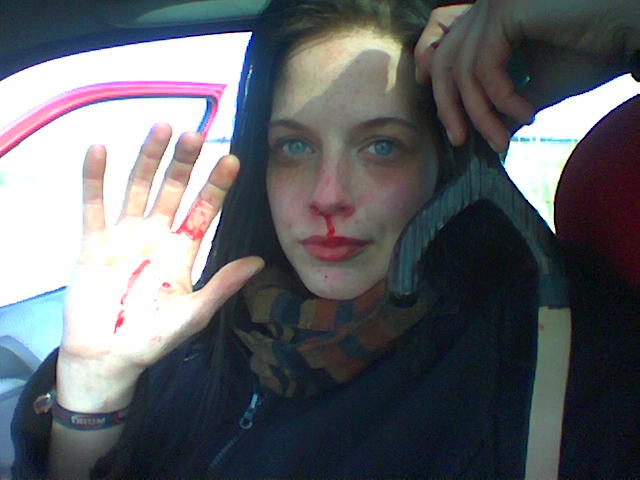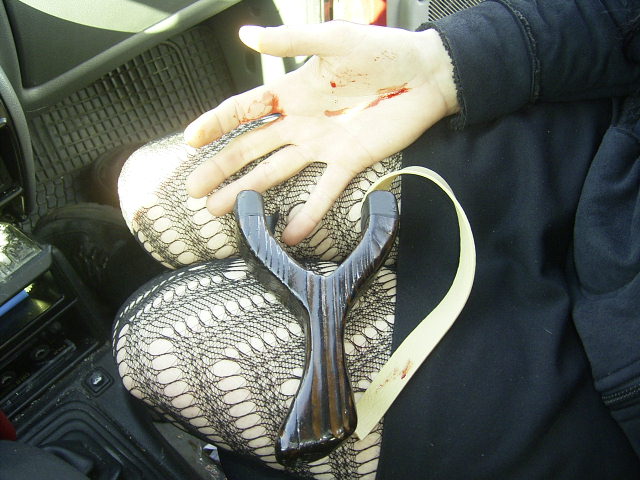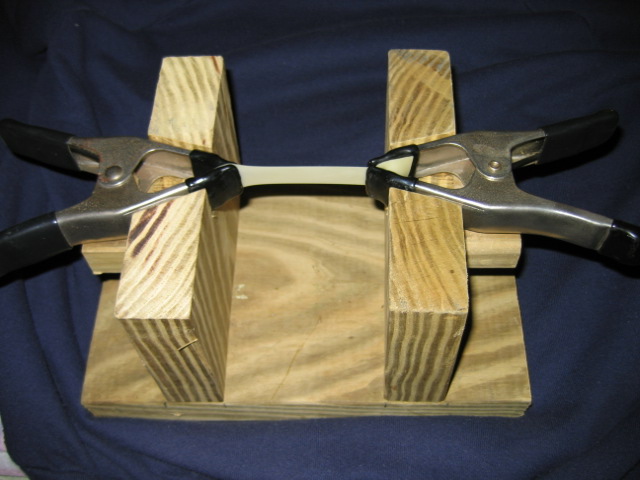
Every slinghot maker is, sooner or later, confronted with the challenge to tie the bands to the slingshot or the pouch to the bands. Many attachment methods require a tie to fasten things together. Before you start, think about some things:
-The pouch attachment gets fully accelerated during the shot. Therefore, you want to keep it as lightweight as possible.
-The band / fork attachment is not accelerated at all, so you don't have to care about weight
-You don't want to use any hard or heavy material on the band/fork tie, as it may fly into your face when the bands break at the wrong spot. Don't use metal, wire etc.
-Rubber gets cut easily. You want to use soft material that spreads the force on a large part of the rubber. You can use such things as cable ties if a piece of cushioning rubber or leather is between band and tying material.
-It should be good-looking, secure, cheap and easy to do.

Tying ordinary string around non-stresses bands is useless. The bands become thinner during pull, and will slip out of the string loops. You must pull the bands as far as possible before you tie.One way do this is to have a friend that pulls the bands, while you make the tie. If no friends are around and you cannot force your little sister to help, take two heavy clamps and build an apparatus that pulls the rubber apart. Such a clamping apparatus greatly faciliates the whole process.
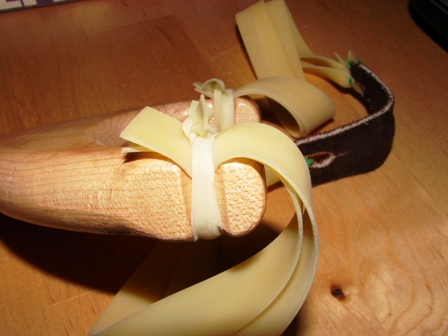
Latex bands are, in my opinion, by far the best stuff to do the job. Just cut thin straps and wind them around the bands, while stretching the straps as far as possible. This results in a "tourniquet-effect", the pull weight of the little latex adds up to an incredible pressure on the bands. Finish off with a square knot. If you use flat latex bands, you can use the worn-out ones to tie the new bands to the slingshot. If you don't have access to flat latex, you can take a latex glove and cut strips out of it.
Ordinary household rubber bands can be used in the same fashion as the latex straps. However, they break more easily, so you need more of it and cannot stress them as much as latex. But you can still make them working pretty good.
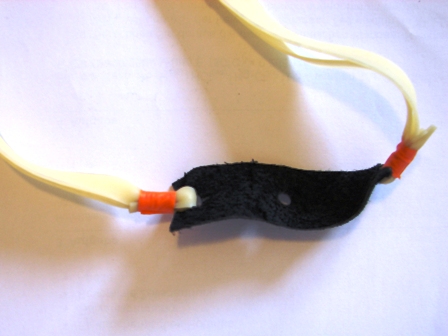
Duct tape or electric tape can be use to make professional-looking attachments: Wind the tape around as hard as you can. Don't leave the bands too much space, or they will slip out. Most tapes require a drop of super glue to prevent them from opening again. Crystal tape is also said to be good.
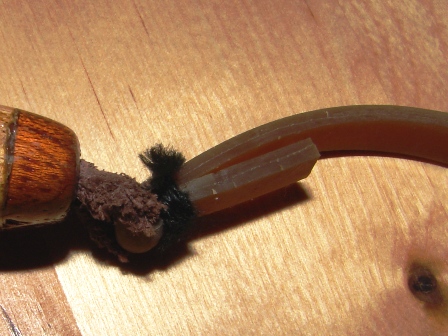
Ordinary string makes a very lightweight attachment, but can cut the bands if bad string is used. Choose soft cotton material.
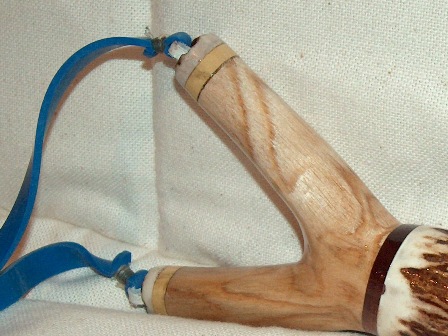
You can use waxed string and slightly heat the bands after tying. This tie is very secure and looks nice.
Cable straps are a very convienent way, but they kill the bands without cushioning material between cable tie and rubber. Use leather, string or rubber to cushion.
I recommend you to attach the bands to the slingshot with household rubber rings or the latex bands I mentioned before. This kind of attachment is gentle to the bands, easy to make and very secure. However, the tying rubber's weight limits its use on the pouch-to-bands-connection, where I like to use waxed string or cotton string, using a constrictor knot.
The following pictures show how you can attach flat latex bands to a fly-over fork without the help of a second person: Put them over the tying groove at the same distance, hold the tying strap with one finger and wind it around the fork with the other hand.
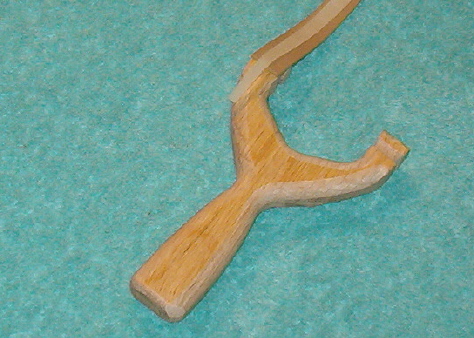
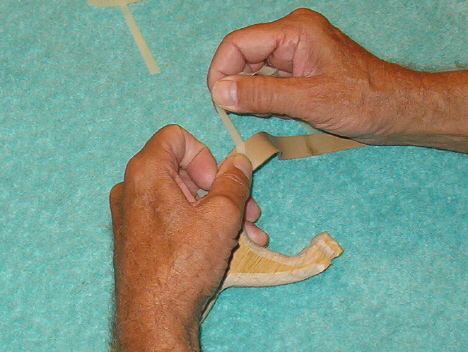
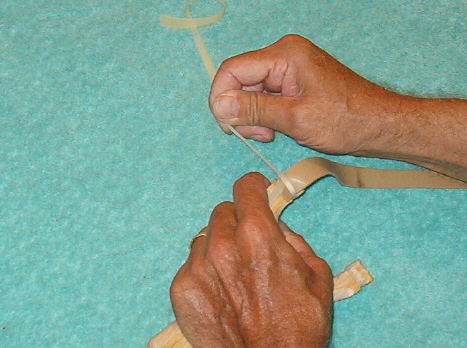
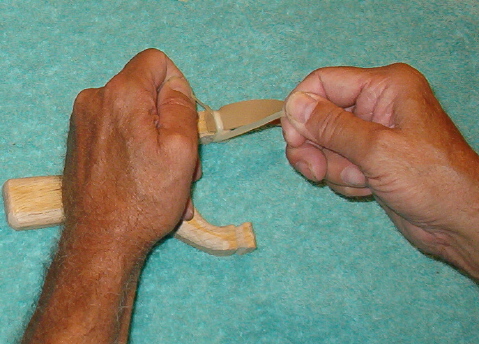
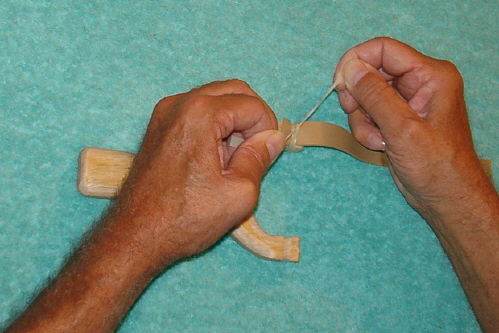
As mentioned above, rubber gets thinner when it is extended. You must either fasten it with an elastic material that keeps tight contact, or pre-stretch the bands during the tying process, so they will not get any thinner on the attachment place, as they are already fully extended there. It is also advisable not to attach it on a smooth surface, but carve a groove into the fork, or do something similar that makes a kink into the rubber. Otherwise, the bands may pull themselves out and snap into your face - which is not funny, as these pictures prove. Fortunately, nothing serious happened to the shooter. These pictures also make clear why you must never, never use something heavy or sharp (like wire) to attach the bands, and why your anchor point must be well below the eye.
